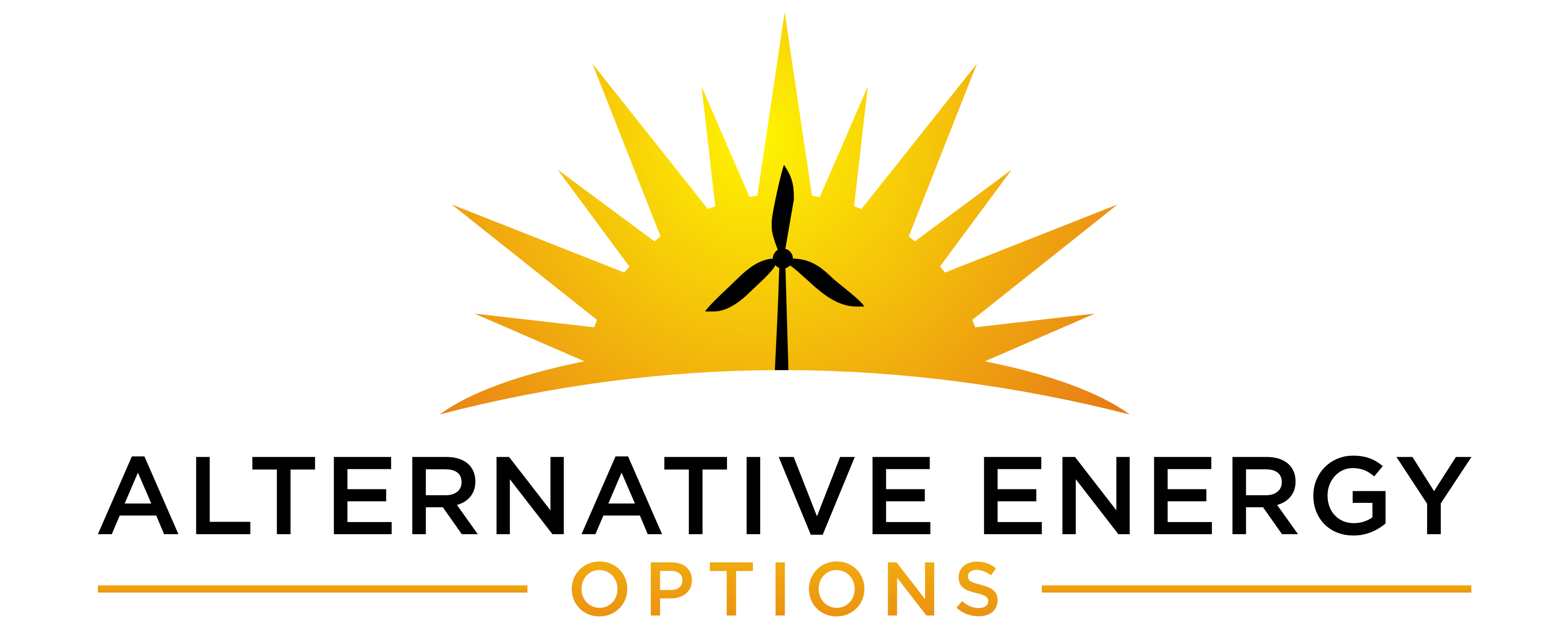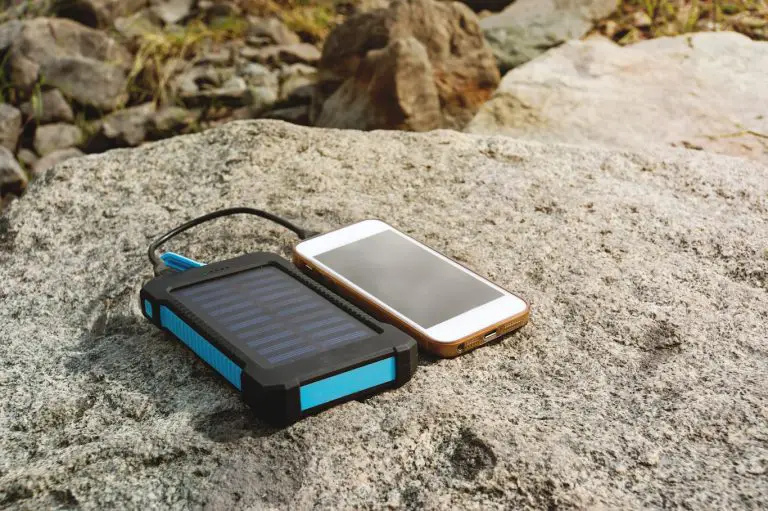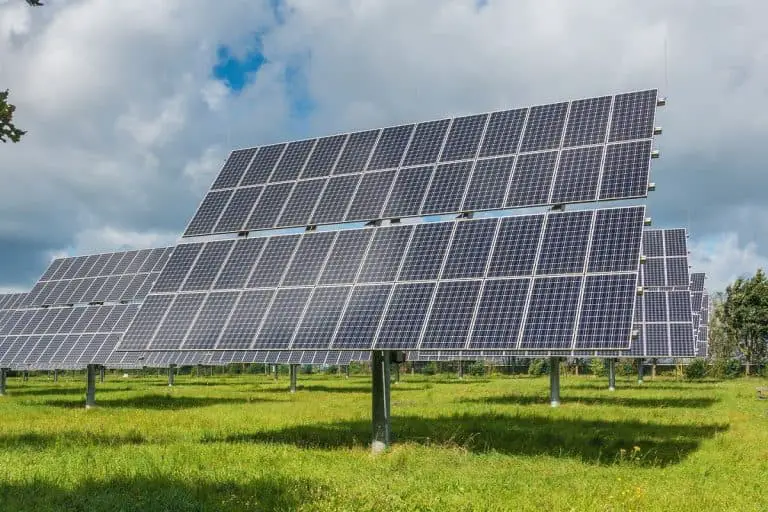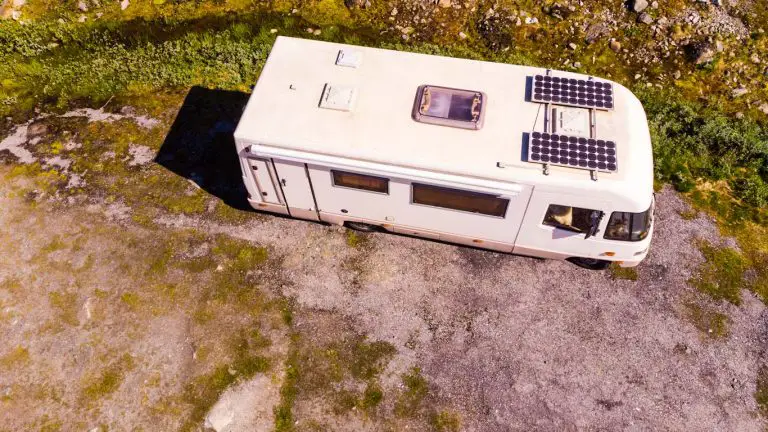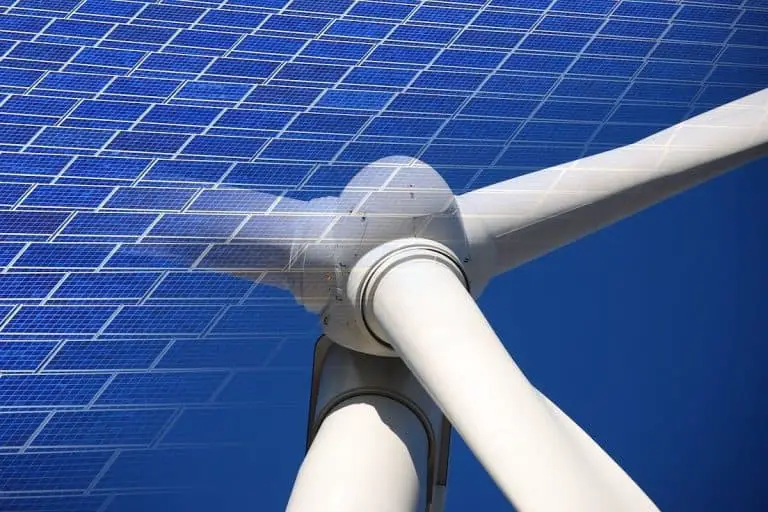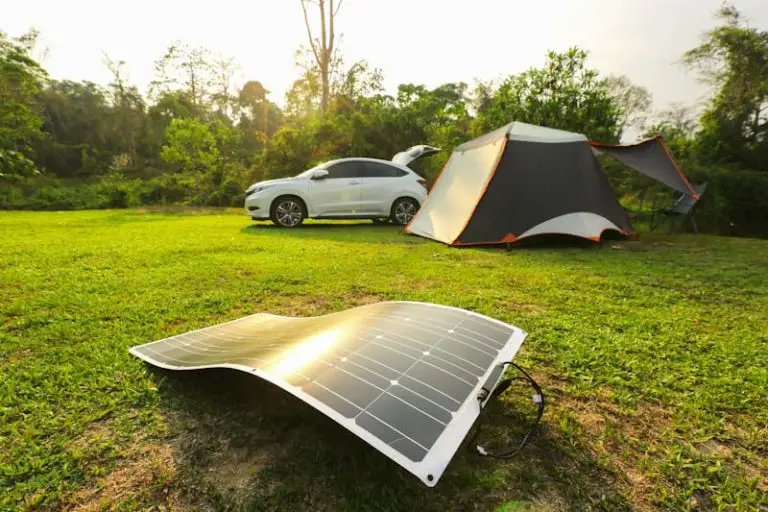How Do You Protect Solar Panels from Hail?
Buying protective covers, performing routine maintenance, and responding to weather warnings are all effective methods for protecting solar panels from hail. Insuring your panels can help you cover the cost of damages, and repairing rather than replacing panels can save money.
Clean energy from solar panels is key to sustainable living, but going solar can be expensive. It’s essential to know how to keep your panels in good condition and in working order to ensure you get the most out of your investment.
Performing basic maintenance and taking proactive steps to prevent damage will ensure that your investment doesn’t turn into a costly maintenance nightmare. Continue reading to see everything you need to know about protecting your solar panels from hail.
How Delicate Are Solar Panels?
We all know that a heavy hailstorm can cause an astonishing amount of damage to houses and cars, even denting roofs and shattering windows and windscreens.
And because solar panels need to be precisely placed to grab as much sunlight as possible, they are usually mounted to the parts of your roof or RV that are most exposed to the elements.
To make the best choices to protect your solar panels, it helps to know a little about how susceptible they are to damage.
What Makes Solar Panels Susceptible to Damage?
Unlike buildings and vehicles made of tough materials like concrete, steel, and wood, solar panels are made from materials that seem much more fragile.
Most solar panels are made up of photovoltaic cells, usually made of silicon, mounted onto a frame and covered with a layer of toughened glass (source). This kind of solar panel, known as a crystalline silicon panel, is the most commonly used.
Thin-film solar panels are a newer development, in which the cells are made from amorphous silicon. They are frequently covered with a layer of plastic rather than glass, making them much lighter and more flexible.
Thin-film panels can then be molded to the shape of a vehicle’s roof, for example, making them an ideal choice for outdoor adventurers. Thin-film panels are also lower in cost, although they are less efficient than crystalline silicon panels.
To learn more regarding what solar panels are made of, read “Are Solar Panels Glass or Plastic?”
Knowing that you are mounting a rigid, heavy, brittle collection of silicon and glass to your roof at the mercy of the weather is understandably nerve-wracking. This is the reason that many people worry about how to protect their shiny new energy systems from damage. But don’t panic yet: the danger may not be as high as you think.
Solar Panels Are Tougher Than You May Realize
Most brands of solar panels on the market have undergone testing for their ability to resist hail damage during the design and development stage (source). This test involves hurling hailstones larger than golf balls at solar panels at speeds of 170 miles per hour. It’s reasonable to assume that a panel that can withstand this test is likely to survive the average storm!
Assessments of panels that have been installed on buildings support this assumption. A paper published by the National Renewable Energy Laboratory (NREL) in 2014 surveyed almost 50,000 photovoltaic or solar energy systems and found that the probability of hail damage was less than 0.05% (source).
When solar panels are covered with glass, that glass is usually toughened or tempered, making it much stronger than average glass. Plastic coverings, meanwhile, are more flexible and less likely to be shattered by a hailstone (source).
In fact, solar panels and systems are generally pretty durable and able to weather the elements. An earlier paper by the NERL, published in 2012, reported that of nearly 2000 solar modules and systems reviewed over 40 years, the vast majority (78%) degraded by less than 1% per year (source).
This stringent testing and durability level is why most solar panel manufacturers will guarantee their product for up to 25 years at 80% power output. However, damage does occur, and it can severely impact the performance of your solar panels.
How Does Hail Damage Affect Solar Panel Performance?
When hail damages a solar panel, the damage is often immediately visible, in the form of large cracks or even holes in the glass covering of the panel. However, sometimes hail can also create invisible micro-cracks in the silicon photovoltaic cells, which will gradually expand as the panel heats and cools until they eventually become visible and start to impact the panel’s performance (source).
Both kinds of damage cause a significant reduction in the panel’s energy output and ultimately shorten its useful lifespan. And even slight damage is a problem: any scratch or crack on the covering of a solar panel reduces the amount of sunlight reaching the cells inside.
Broken photovoltaic cells will not generate energy effectively, and moisture inside the panel will damage the components and may cause the cell to short-circuit. If the damage is severe enough, it can immediately render the panel useless.
Most hail damage to solar panels is caused by hailstones that are larger than an inch in diameter. Visible damage is usually caused by larger hailstones, especially those of 1.5 inches or more in diameter. During a heavy storm, solar panels may also face damage from falling or flying debris, such as tree branches.
Thanks to climate change, many regions of the world are predicted to experience more frequent and more extreme weather events, including devastating storms and hailstorms. So, it’s best not to rely only on your solar panels’ durability but rather to take some simple steps to protect them from potential damage.
Five Simple Steps to Protect Solar Panels from Hail Damage
Protecting solar panels from hail damage doesn’t have to be costly or time-consuming and is mostly a matter of common sense. It involves some simple research, proactive safety measures, and basic maintenance and monitoring.
Step 1: Do Your Research
Before you even buy your solar energy system, it pays to do your research and assess the challenges your solar panels will be facing.
If you are buying solar panels for your home, read up on the climate conditions in your area and how they might affect the type and brand of solar panel you will purchase. You may want to consider speaking to local specialists who will be familiar with the way solar panels perform in your region.
Does your region experience regular, severe hailstorms? Consider purchasing smaller solar panels that can be more easily and cheaply replaced if damaged.
Does your region have strong prevailing winds or experience gale-force winds and hurricanes? Panels mounted out of the prevailing wind may be better protected from storm damage.
Does your area have heavy snowfall in winter? You should buy panels that are rated to withstand a static load and consider mounting them at a steeper angle to prevent a buildup of snow. Remember that your roof must also be able to withstand the weight of both the solar panels and snow in winter.
If you’re going to install a solar energy system on your RV, caravan, or boat, you are likely planning to expose the panels to a variety of different areas and their climates. Ensure you choose robust panels and check their weather rating. Consider mounting the panels on an adjustable frame that can be tilted or laid flat according to the weather conditions and angle of the sun.
Always read the warranty information on the solar panels you choose to buy. Many brands guarantee their panels against a certain amount of wind and hail damage.
Step 2: Get the Installation Right
You don’t always have to wait for a hailstorm — damage to your solar panels can often result from poor installation. In some cases, solar panels can be damaged in transit or during installation itself. If this damage is invisible, you won’t know until later, when your warranty may have expired. So make sure you are working with reputable and reliable providers and contractors.
Think carefully about the placement and orientation of your solar panels. Of course, they must be placed to make the most of the available sunlight, but you should also think about where your panels are placed in relation to the prevailing winds.
Panels that are mounted flat are far more likely to be damaged by hailstones than those mounted at a steep angle. If your house has a low-pitch or flat roof, consider mounting the panels on a frame at an angle to the roof.
Step 3: Invest in Some Weather Proofing
A few extra dollars spent now may help save you hundreds or even thousands later. Consider investing in a protective cover for your solar panel, which can be placed over the glass surface when heavy storms are predicted.
If you can’t find a cover that is specifically designed for your panels, a tarpaulin, some heavy blankets, or a sheet of plywood will offer some protection. Be careful to avoid scratching the surface of the panels or banging a heavy object against them, as you may cause exactly the kind of damage you are trying to prevent.
Some RV owners make their own permanent solar panel covers from a transparent material such as plexiglass. However, any cover may reduce the amount of sunlight reaching the panel and reduce its energy output, especially if the plexiglass becomes scratched or cracked.
Another protective system to consider is an adjustable mounting frame, which will allow you to tilt the panels to the vertical position when hail is predicted. When the panels are angled vertically, there is less surface available for the hail to land on — unless you have gale force winds driving the hail sideways.
Step 4: Respond to the Weather Warnings
Keeping your solar panels covered or tilted vertically at all times will make them useless for their purpose, which is to generate energy from the sun. To save yourself the guesswork and constant worry, set up a weather alert on your phone so that you know when storms are coming.
Step 5: Don’t Skip Routine Maintenance and Monitoring
As we know, some hail damage to solar panels can be invisible, and you’ll only be able to tell the panels are damaged by their reduced performance. The only way to know that your solar panels are underperforming is by being closely involved in their day-to-day maintenance and monitoring their power output regularly.
Multiple monitoring systems are available for solar panels, and many send information to the cloud so that you can access it via an app even when you’re not at home. Monitoring your solar panels will help you keep an eye on their efficiency, and some can even alert you to damage.
Optimize the performance of your panels by keeping up-to-date on routine maintenance, such as cleaning the surface regularly to remove dust, leaves, and other buildup. A dirty solar panel can lose up to 30% of its power capability (source). Cleaning the panels also allows you to inspect them visually for damage.
If you’re not eager to climb up on the roof every few weeks, alternatives include automatic cleaning systems or an outsourced cleaning service. It may also be worthwhile to call your manufacturer or installer to check and service the panels once a year.
Keeping your panels well-maintained and monitored optimizes their performance and means you’re more likely to notice damage when it happens.
To learn more about performing everyday maintenance on your solar panels, read “What Is the Best Way to Clean Solar Panels?”
What to Do When Your Solar Panels Are Damaged
Despite plenty of indications that solar panels will withstand some severe weather conditions, and some easy steps you can take to prevent damage, there is always a possibility that a particularly nasty storm will inflict some harm on your solar panels.
In this case, it’s best to make sure you have a backup plan to mitigate the financial impacts when the worst happens.
Make Sure You’re Insured
Insurance is the obvious way to cover yourself against unexpected damage to your property, and solar panels are no different.
Solar panels mounted on the roof of your house are part of the house’s structure and may be automatically covered by your household insurance. Still, never assume that you are covered. Read the fine print on your insurance policy, and call your provider for more information about your coverage.
Adding a solar energy system may also change the market value of your house. It may be wise to call your provider before installation to find out whether adding solar panels to your roof will affect your premiums.
When it comes to installing solar panels on an RV, your provider may consider this addition as “customization,” which refers to any changes you make to the vehicle as it comes from the factory.
Call your provider to find out how customization affects your policy, as you may need to upgrade your insurance policy to cover such additions. You should also check whether installing solar panels will affect the vehicle’s warranty.
Save Money by Repairing, Not Replacing
Solar panels are expensive items, and replacing one, especially without insurance, can be an unpleasant strain on the pocket.
What’s more, a lot of energy, water, and chemicals are expended in the manufacture of solar panels, so if you’re invested in protecting the environment, you might want to think twice about treating them as disposable (source).
The good news is, depending on the level of damage to your panels, a full replacement may not be necessary.
Many of the solar panel components, especially the mounting frame, wires, connectors, and backing, can often be replaced quickly and affordably (source). Repairing the glass covering and the cells themselves is a more disputed issue.
In some cases, a cracked glass covering can be replaced or made watertight by applying an epoxy resin or plastic film (source). Some owners make DIY repairs, but it may be advisable to consult an expert, especially if your warranty is still in place, as you will void it by modifying the panel yourself.
Final Thoughts
Hail and storm damage is a common concern for those considering investing in solar panels for their homes or vehicles, and for good reason. Solar energy systems are costly, and it’s important to ensure that your investment pays off rather than putting more strain on your wallet.
The risk of damage from hail is not as high as it might seem. Research shows that solar panels are durable and resistant to hail damage, thanks partly to the rigorous testing that many manufacturers undertake. This along with the very slow natural degradation of solar panels is why many brands come with a 25-year warranty.
Nevertheless, it is a wise choice to take a few simple steps to protect your solar panels from increasingly extreme weather events to avoid wasting finite resources and to make sure they will keep generating sustainable energy for many years to come.
